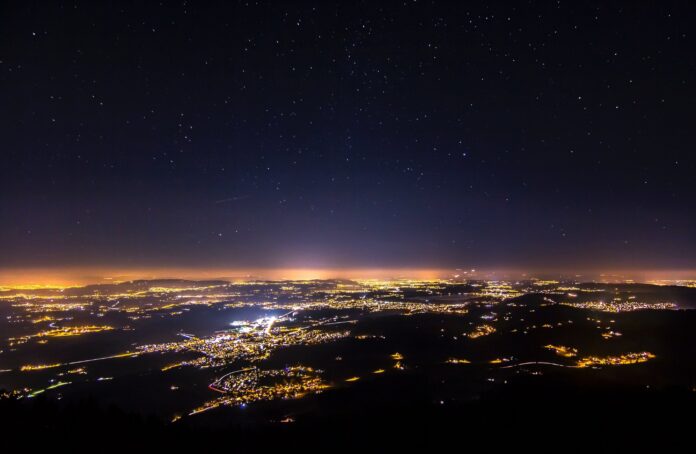New research reveals a concerning link between artificial light at night (ALAN) and increased carbon emissions from ecosystems across continents. This silent threat is quietly altering the delicate balance of carbon storage, potentially impacting climate models and global efforts to mitigate climate change.
While often overlooked, ALAN is rapidly spreading – nearly a quarter of Earth’s landmass now experiences some level of artificial illumination at night. This study, published in Nature Climate Change by researchers at Cranfield University, is the first to demonstrate its far-reaching consequences for carbon cycles.
The research team analyzed data from 86 carbon flux monitoring sites across North America and Europe, combined with satellite observations of nighttime light intensity. Their findings are stark: ALAN boosts ecosystem respiration – the process where plants, microbes, and animals release carbon dioxide through their activity and growth. However, this increase in CO2 release isn’t balanced by a corresponding rise in photosynthesis, the crucial process that removes carbon dioxide from the atmosphere.
Essentially, brighter nights lead to greater amounts of carbon being released into the environment. This pattern was observed on a continental scale, demonstrating how ALAN silently reshapes the delicate balance of carbon absorption and output within entire ecosystems. “Light pollution is one of humanity’s most visible environmental changes,” explains Dr. Alice Johnston, lead researcher from Cranfield University, “but its impacts often remain hidden.”
Dr. Johnston emphasizes that this widespread issue disrupts essential energy flows, animal behavior, habitats, and natural patterns. This has significant implications for climate models, which currently don’t account for light pollution’s influence on carbon cycling. The research team argues that including ALAN alongside land-use changes and other factors driving carbon shifts is crucial for accurately predicting future climate scenarios.
The good news is that unlike many environmental challenges, light pollution offers a relatively easy solution. “Unlike climate change,” says Dr. Johnston, “reducing light pollution could happen almost overnight.” The key lies in adopting smarter lighting practices: dimmable lights, directional illumination, and technologies that use specific wavelengths less disruptive to wildlife can make a substantial difference.
These changes not only benefit the environment but also offer energy savings (lighting accounts for roughly 15% of global electricity consumption) and potential improvements in human health, which has been linked to excessive nighttime light exposure. Tackling light pollution presents a unique opportunity to create a win-win-win scenario for our planet, energy resources, and well-being.



























